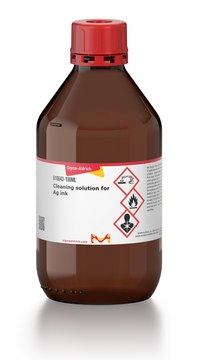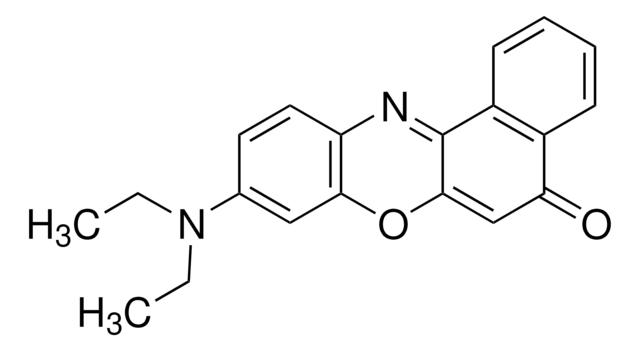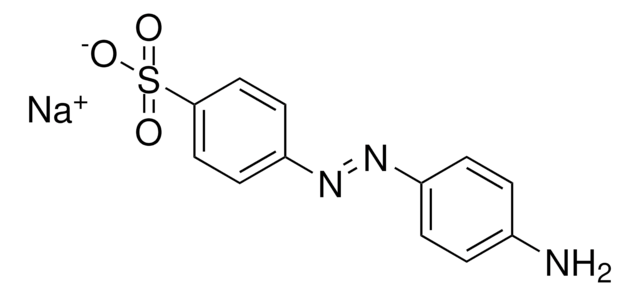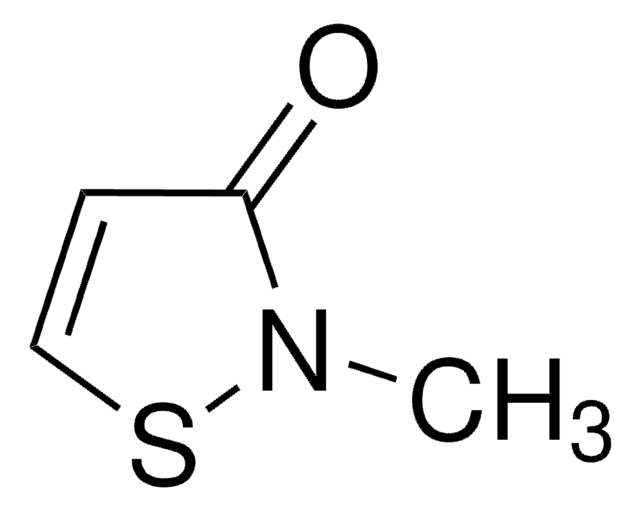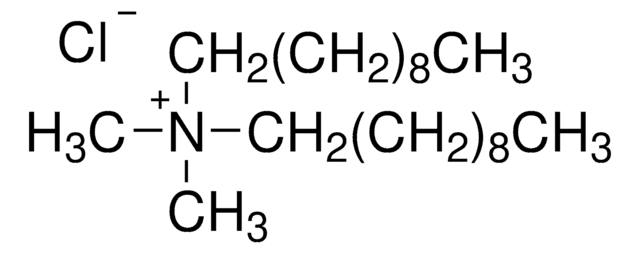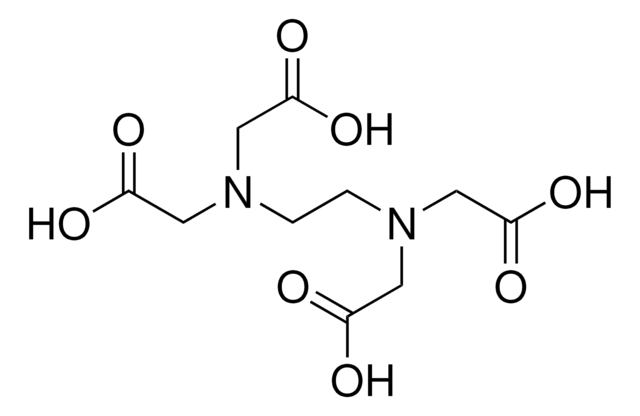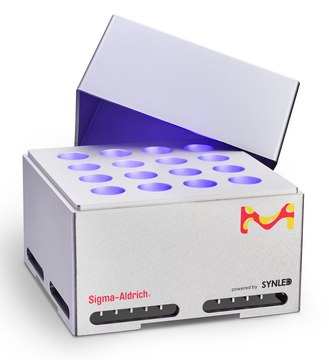919233
Sodium 2-(4-hexylphenyl)diazene-1-sulfonate
(0.5% solution in 25mM aqueous ammonium bicarbonate, pH 7.0), ≥95%
Synonym(s):
4-Hexylphenylazosulfonate, Azo
Sign Into View Organizational & Contract Pricing
All Photos(1)
About This Item
Empirical Formula (Hill Notation):
C12H17N2O3S · Na
CAS Number:
Molecular Weight:
292.33
MDL number:
UNSPSC Code:
12161503
NACRES:
NA.22
Recommended Products
Quality Level
Assay
≥95%
form
liquid
refractive index
n/D 1.334
density
0.994 g/mL
storage temp.
2-8°C
SMILES string
[Na+].[S](=O)(=O)(\N=N\c1ccc(cc1)CCCCCC)[O-]
InChI
1S/C12H18N2O3S.Na/c1-2-3-4-5-6-11-7-9-12(10-8-11)13-14-18(15,16)17;/h7-10H,2-6H2,1H3,(H,15,16,17);/q;+1/p-1/b14-13+;
InChI key
GOFLQKOPOSFUCU-IERUDJENSA-M
Application
4-Hexylphenylazosulfonate (Azo) is a photocleavable anionic surfactant developed by the Ge lab for use in high-throughput top-down and bottom-up proteomics by mass spectrometry (MS). Initially, the reagent showed a breakthrough as an improved method for top-down analysis [Brown et al. 2019]. Top-down analysis looks at intact proteins, while bottom-up analysis uses digested proteins. Of the two, top-down analysis is preferable for detecting post-translational modifications and sequence variations. Bottom-up is more commonly used and is likely to detect more proteins. This reagent was also shown to work for sample extraction that can be used for both top-down and bottom-up analysis on the same sample to maximize data collection[Brown et al. 2020].
Surfactants are required for protein extraction especially for challenging classes of protein including membrane proteins[Brown et al. 2020] and extracellular matrix proteins[Knott et al. 2020], but surfactants suppress the signal in MS. While removing a surfactant will improve the signal, this can cause protein loss and degradation. Azo allows for easy removal since it can be rapidly degraded using ultraviolet irradiation (λmax = 305 nm). Using Azo in this way reduces protein loss and gives an improved signal. Please see the Ge lab publications for information on using this product [Brown et al. 2019, Brown et al. 2020, Knott et al. 2020, and Aballo et al. 2021].
Product can be used with our line of photoreactors: Including Penn PhD (Z744035) & SynLED 2.0 (Z744080)
Surfactants are required for protein extraction especially for challenging classes of protein including membrane proteins[Brown et al. 2020] and extracellular matrix proteins[Knott et al. 2020], but surfactants suppress the signal in MS. While removing a surfactant will improve the signal, this can cause protein loss and degradation. Azo allows for easy removal since it can be rapidly degraded using ultraviolet irradiation (λmax = 305 nm). Using Azo in this way reduces protein loss and gives an improved signal. Please see the Ge lab publications for information on using this product [Brown et al. 2019, Brown et al. 2020, Knott et al. 2020, and Aballo et al. 2021].
Product can be used with our line of photoreactors: Including Penn PhD (Z744035) & SynLED 2.0 (Z744080)
Legal Information
PCT/US2019/035447
Storage Class Code
10 - Combustible liquids
WGK
WGK 2
Choose from one of the most recent versions:
Certificates of Analysis (COA)
Lot/Batch Number
Don't see the Right Version?
If you require a particular version, you can look up a specific certificate by the Lot or Batch number.
Already Own This Product?
Find documentation for the products that you have recently purchased in the Document Library.
Photocleavable Surfactant-Enabled Extracellular Matrix Proteomics.
Knott S J, et al.
Analytical Chemistry, 92(24), 15693-15698 (2020)
Kyle A Brown et al.
Angewandte Chemie (International ed. in English), 59(22), 8406-8410 (2020-02-26)
Mass spectrometry (MS)-based proteomics provides unprecedented opportunities for understanding the structure and function of proteins in complex biological systems; however, protein solubility and sample preparation before MS remain a bottleneck preventing high-throughput proteomics. Herein, we report a high-throughput bottom-up proteomic
Ultrafast and Reproducible Proteomics from Small Amounts of Heart Tissue Enabled by Azo and timsTOF Pro..
Aballo T J, et al.
Journal of Proteome Research, 20(8), 4203-4211 (2021)
Kyle A Brown et al.
Nature methods, 16(5), 417-420 (2019-04-17)
We report the identification of a photocleavable anionic surfactant, 4-hexylphenylazosulfonate (Azo), which can be rapidly degraded by ultraviolet irradiation, for top-down proteomics. Azo can effectively solubilize proteins with performance comparable to that of sodium dodecyl sulfate (SDS) and is compatible
Our team of scientists has experience in all areas of research including Life Science, Material Science, Chemical Synthesis, Chromatography, Analytical and many others.
Contact Technical Service